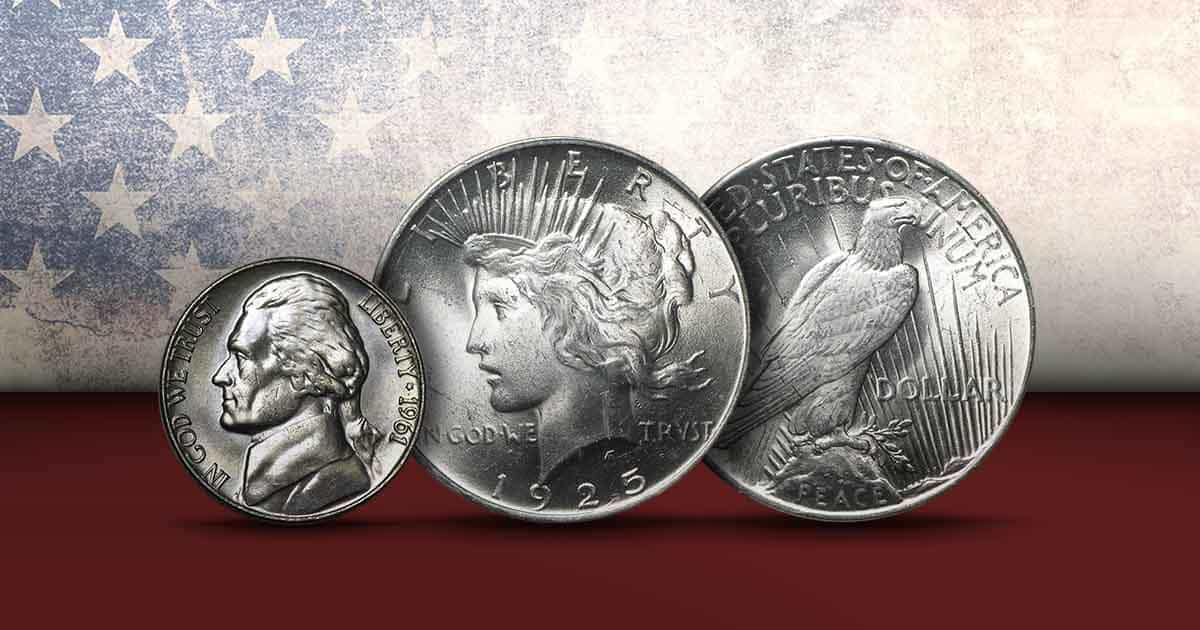
When did the U.S. Mint Stop Issuing Silver Coins for Circulation?
Until 1965, the U.S. Mint issued dimes, quarters, and half dollars composed of 90% silver and 10% nickel.
Pre-1965 coins are often referred to by their silver content. When you see 90% silver, it also refers to these coins. The term junk silver may refer to 90% silver coins, 40% silver coins described below, or 35% silver nickels issued during WWII.
U.S. Coin Composition Changed in 1965
In 1965 the composition of dimes and quarters changed to a cupro-nickel alloy. The silver Kennedy half dollar was in high demand, depleting the nation’s silver reverses. At the same time, the price of silver was beginning to rise, which left the U.S. Mint in a precarious place as far as seigniorage was concerned.
Silver Dollars and Half Dollars
1965 was not the final year of circulating silver American coinage. The half-dollar and later dollar coins were produced with silver, although the content was lower than previously issued coins.
When other 90% silver coins became cupro-nickel in 1965, the composition of the half dollar was changed to 40% silver with the balance in copper. From 1965 through 1970, and again in 1976, the half dollar was struck with 40% silver.
This provided the American public with a silver content coin to collect and reduced the risk of the U.S. Mint spending more to produce coins than they were worth.
A silver dollar had not been issued since the Peace Dollar in 1935.
In 1971, Eisenhower dollars from the San Francisco mint were issued in 40% silver. Eisenhower dollars featuring the “S” mint mark were produced with 40% silver through 1976. Other Eisenhower dollars were composed of the new cupro-nickel alloy.
In 1976, a special 40% silver bicentennial quarter, half dollar, and dollar were issued.
Other Silver Coins Produced Since 1976
It is worth noting that the American Silver Eagle has been issued since 1986, and there have been proof silver dollars since then. These are not circulating coins in the spirit of the question, though.





